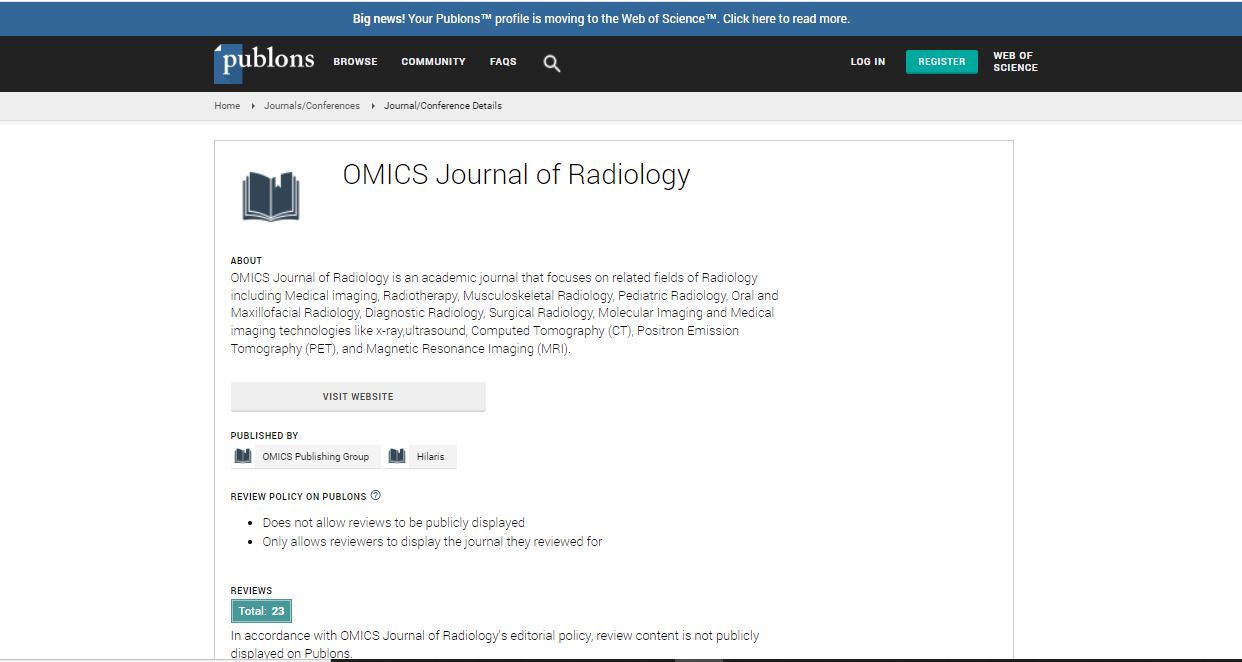Research Article
40 ml And 50 ml Contrast Volume Comparison in 256-Slice Craniocervical Computed Tomography Angiography
| Sharma BR*, Timilsina M, Yuan QH and Liu D | |
| Norman Bethune College of Medicine, Changchun, Jilin, Chinab | |
| Corresponding Author : | Sharma BR Norman Bethune College of Medicine Changchun, Jilin, China Tel : +86-431-85166885 E-mail: bhojrajsharma2@gmail.com |
| Received July 17, 2014; Accepted August 04, 2014; Published August 11, 2014 | |
| Citation: Sharma BR, Timilsina M, Yuan QH, Liu D (2014) 40 ml And 50 ml Contrast Volume Comparison in 256-Slice Craniocervical Computed Tomography Angiography. OMICS J Radiol 3:168. doi:10.4172/2167-7964.1000168 | |
| Copyright: © 2014 Sharma BR, et al. This is an open-access article distributed under the terms of the Creative Commons Attribution License, which permits unrestricted use, distribution, and reproduction in any medium, provided the original author and source are credited. | |
Abstract
Objective: The main objective of this study is to reduce attenuation profiles and decrease the perivenous artifacts by decreasing the contrast amount used than used regularly.
Material and methods: Sixty six patients were randomly assigned into two groups (Group A and B), each comprising 33 patients. Group A (21 men, 12 women) received the department’s standard protocol of 50 ml intravenous contrast volume, whereas Group B (19 men, 14 women) received 40 ml of contrast volume and underwent craniocervical CTA (computed tomographic angiography). Quantitatively, mean attenuation values for both groups were measured in arteries and veins of the craniocervical region. Attenuation values of veins and arteries were measured at four points. Qualitatively, two radiologists independently evaluated the axial source and maximum intensity projection (MIP) images for the occurrence of artifacts at the subclavian vein using a four-point scale. Probability values less than 0.05 were considered statistically significant. Results: Although there were no statistically significant differences in mean arterial attenuation profiles (aortocarotid artery (p=0.87) and vertebra-basilar artery (p=0.72)) in Group A versus Group B, mean venous attenuation values were lower in Group B than in Group A (110 ± 19.61 HU vs. 188.27 ± 57.4 HU; p<0.001). When compared with Group A qualitatively, the perivenous artifacts in the subclavian veins were evaluated as less prominent (p<0.001) in Group B, whereas there was no significant difference during the qualitative assessment of the arterial images.
Conclusion: Use of 40 ml contrast medium on cervical CTA can reduce venous attenuation profiles and decrease perivenous artifacts in the subclavian veins when compared with 50 ml.

 Spanish
Spanish  Chinese
Chinese  Russian
Russian  German
German  French
French  Japanese
Japanese  Portuguese
Portuguese  Hindi
Hindi 
